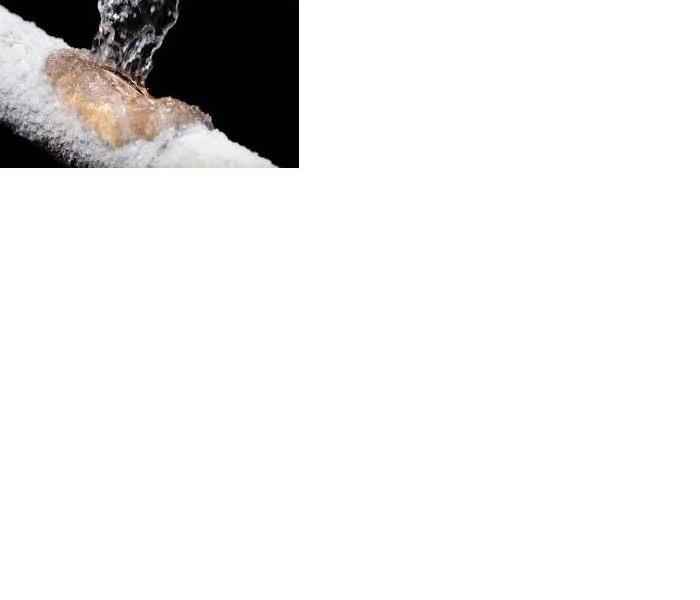Are You and Your House Ready for Winter?
9/6/2019 (Permalink)
It’s September and we’re still in the grip of summer’s heat but now is the time to start thinking about your home and if it is ready for the coming winter. Key to protecting your home from water damage in the winter is making sure your pipes are properly insulated and protected from sub-freezing temperatures. Water expands when it freezes. In pipes, the expansion can cause ruptures. The damage often occurs not at the point where a pipe has frozen, but between the freeze and a faucet. As the ice blocks the pipe completely and expands, the water pressure in the pipe increases. Too much pressure will rupture the pipe.
In northern regions of the United States, pipes are typically protected in insulated spaces, reducing the risk of freezing. In southern climates, where subfreezing temperatures are less common, pipes may not be as well protected. Pipes that run through exterior walls are particularly at risk, but those that run through uninsulated attics and crawlspaces can also freeze. In either region, extended subfreezing weather, cracks in walls or foundations and entry points for pipe and cable put pipes at risk. Poor insulation increases the vulnerability. Outside the home, hose spigots are also at risk.
Take steps to prevent frozen pipes:
Many of the repairs and improvements you can make to minimize the risk of frozen pipes are basic energy-conservation practices.
- Locate and seal cracks and openings in the walls, attic, basement or crawlspace.
- Weather strip and caulk around crawlspace doors and basement windows.
- Make sure your home is properly insulated. Pay particular attention to areas where pipes are located.
- Insulate unprotected pipes and don't leave any gaps in the insulation. Pipe sleeves simplify the process. Keep the pieces tight against each other and seal the slits and joints with duct tape.
- Install thermostat-controlled, UL-listed heat cables. Use cables that are appropriate for your pipe and follow the manufacturer's instructions for installation. Some manufacturers recommend unplugging the cables at the end of the season.
- Install storm windows over basement windows or replace the old windows with energy-efficient alternatives.
Have Questions about Water Damage?
Call us Today – SERVPRO of Gainesville 770-536-1010

 24/7 Emergency Service
24/7 Emergency Service
